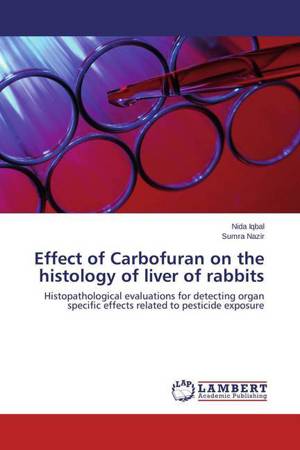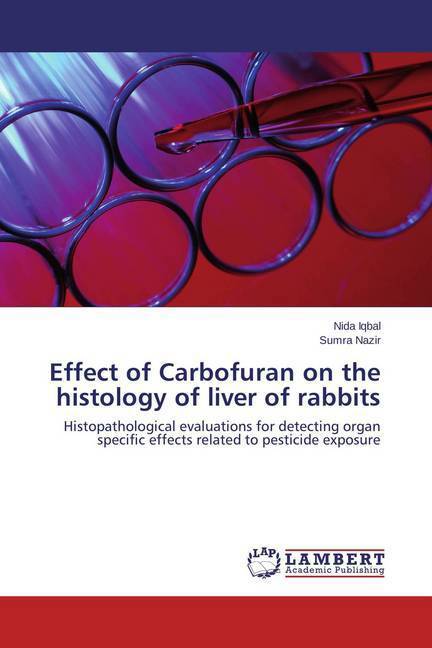
- Afhalen na 1 uur in een winkel met voorraad
- Gratis thuislevering in België vanaf € 30
- Ruim aanbod met 7 miljoen producten
- Afhalen na 1 uur in een winkel met voorraad
- Gratis thuislevering in België vanaf € 30
- Ruim aanbod met 7 miljoen producten
Zoeken
Effect of Carbofuran on the histology of liver of rabbits
Histopathological evaluations for detecting organ specific effects related to pesticide exposure
Nida Iqbal, Sumra Nazir
Paperback | Engels
€ 43,95
+ 87 punten
Omschrijving
The modern man is constantly exposed to a variety of toxic chemicals primarily due to changes in life style. Among all classes of pesticides, carbamates are most commonly used compounds because OPs and OCls are extremely toxic and possess delayed neurotoxic effects. Toxicological characteristics of the N-methyl carbamates involve maximal cholinesterase enzyme inhibition followed by a rapid recovery, typically from minutes to hours. Among other pesticides, carbamates have been included in the list of known endocrine disruptor compounds.The accumulation of carbofuran in animals and humans may take place via ingestion of pesticide-contaminated food and water as well as accidental or occupational poisoning.The liver is the primary organ involved in xenobiotic metabolism and is a major target organ of chemicals and drugs. Hepatotoxicity is therefore an important end point in the evaluation of the effect of a particular xenobiotic. Clinical chemistry and histopathological evaluations are commonly used methods for detecting organ specific effects related to chemical exposure. Liver showed hypertrophy of hepatocytes within 8 hours after the injection of the pesticide.
Specificaties
Betrokkenen
- Auteur(s):
- Uitgeverij:
Inhoud
- Aantal bladzijden:
- 80
- Taal:
- Engels
Eigenschappen
- Productcode (EAN):
- 9783659648502
- Verschijningsdatum:
- 4/12/2014
- Uitvoering:
- Paperback
- Afmetingen:
- 150 mm x 220 mm
- Gewicht:
- 127 g

Alleen bij Standaard Boekhandel
+ 87 punten op je klantenkaart van Standaard Boekhandel
Beoordelingen
We publiceren alleen reviews die voldoen aan de voorwaarden voor reviews. Bekijk onze voorwaarden voor reviews.








